Abstract
Immune sera were prepared in rabbits by the injection of living and acetone-killed cells of Brucella ovis and smooth and rough B. melitensis. The use of whole-cell antigens in agglutination and agglutinin-absorption tests revealed little relationship between B. ovis and smooth B. melitensis, although there was extensive cross-agglutination between B. ovis and rough B. melitensis. The use of water-soluble antigens prepared from ultrasonically treated cells of the three strains revealed extensive cross-reactions in indirect hemagglutination, agar gel precipitation, and immunoelectrophoresis tests, as well as in allergic skin tests in rabbits. The most definitive results were obtained with the immunoelectrophoresis technique. B. ovis antigen produced at least 11 lines with its homologous serum. All were removed by absorption of the serum with rough B. melitensis antigen. All but three were removed by absorption with smooth B. melitensis antigen. Smooth B. melitensis antigen produced 11 lines with its homologous serum, and all but 3 were removed by absorption with B. ovis antigen. Rough B. melitensis produced nine lines with its homologous serum, and eight were removed by B. ovis antigen. The extensive cross-reactions between soluble antigens of B. ovis and B. melitensis are added evidence that B. ovis belongs in the genus Brucella.
Full text
PDF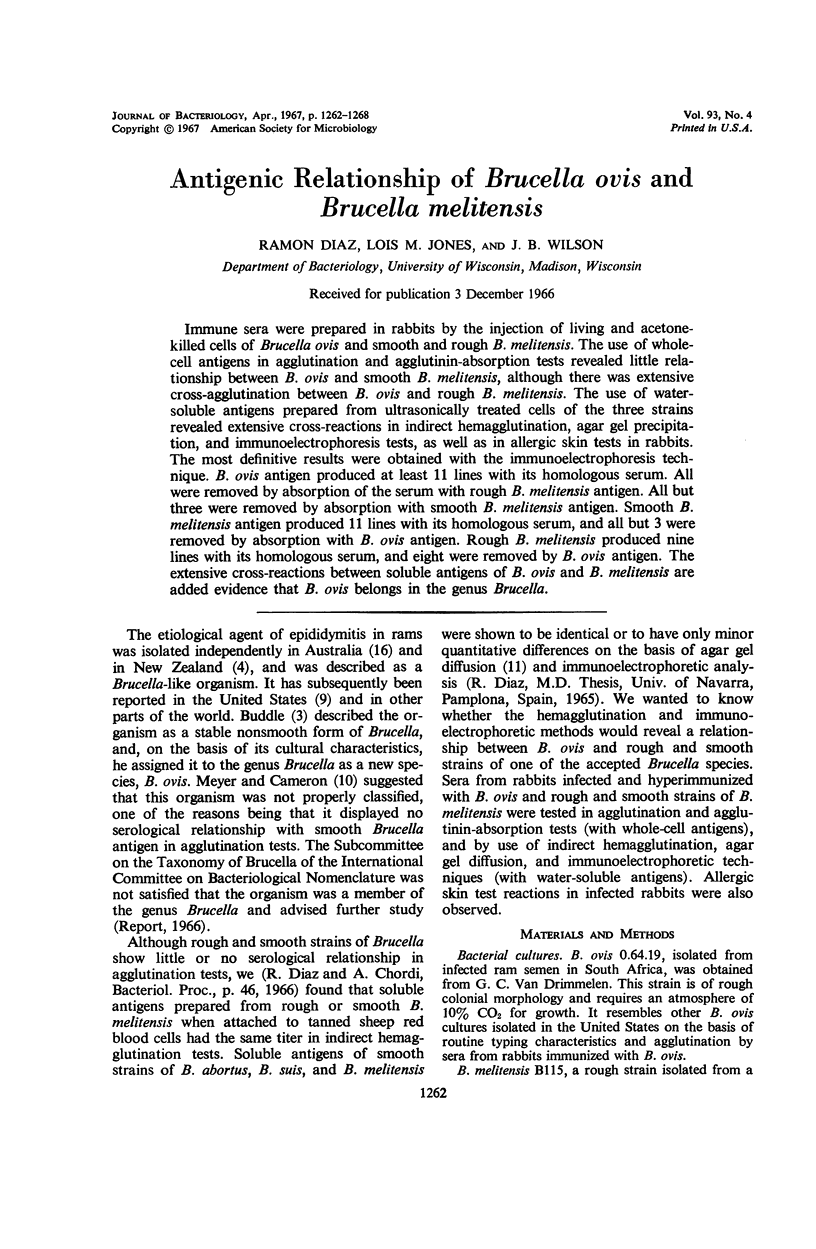
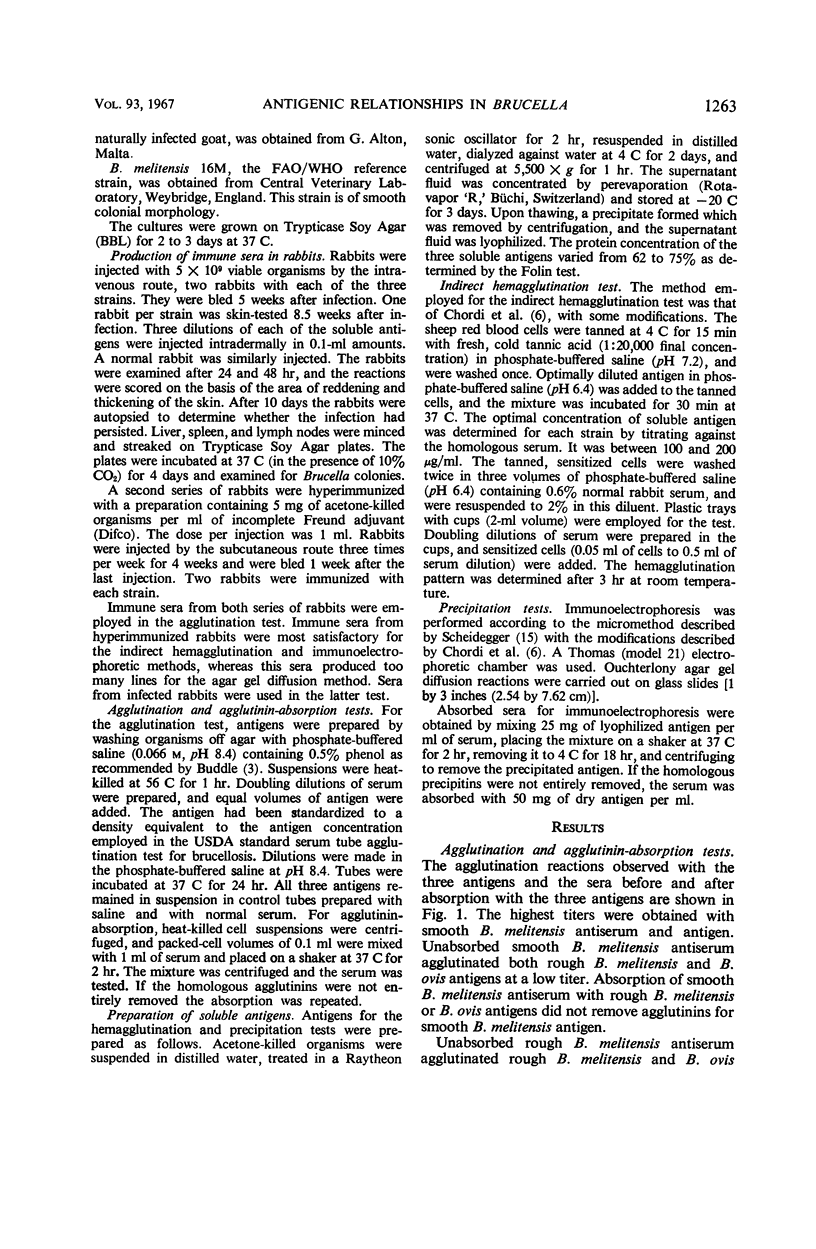
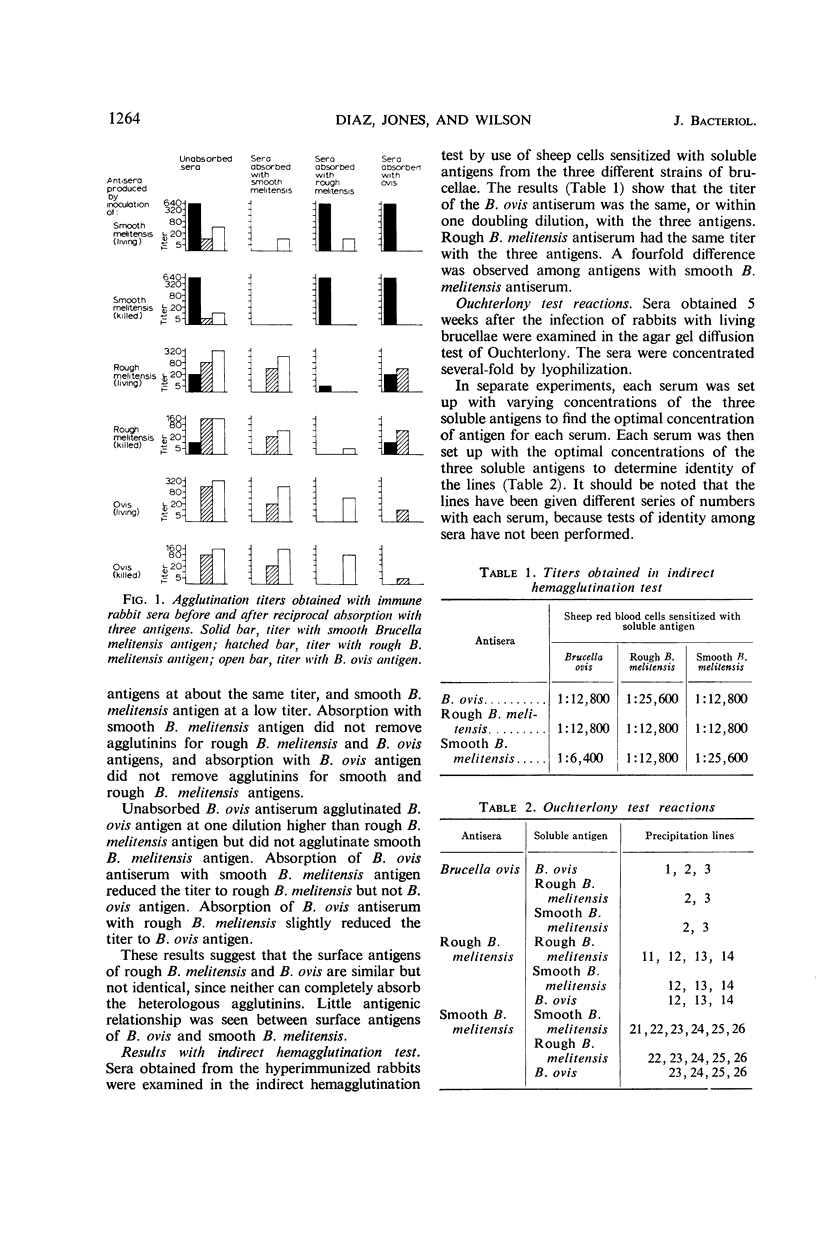
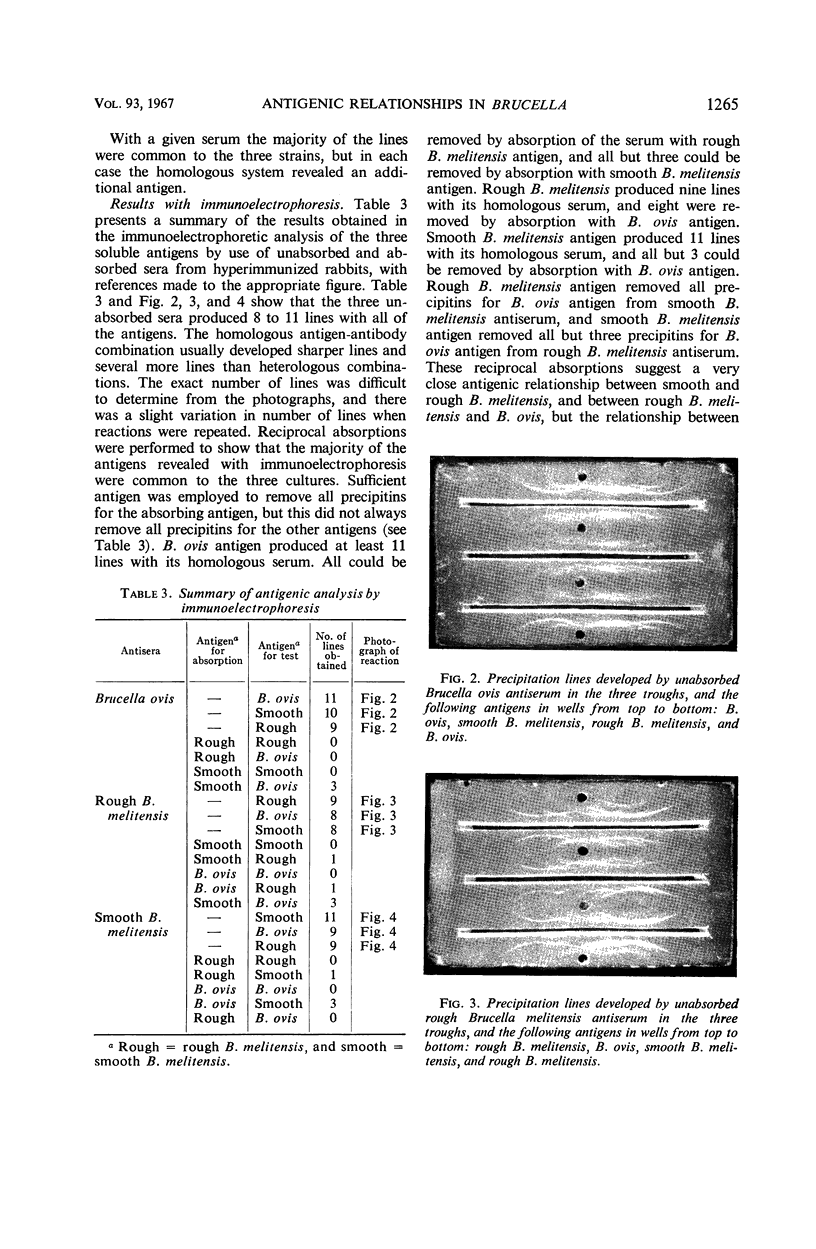
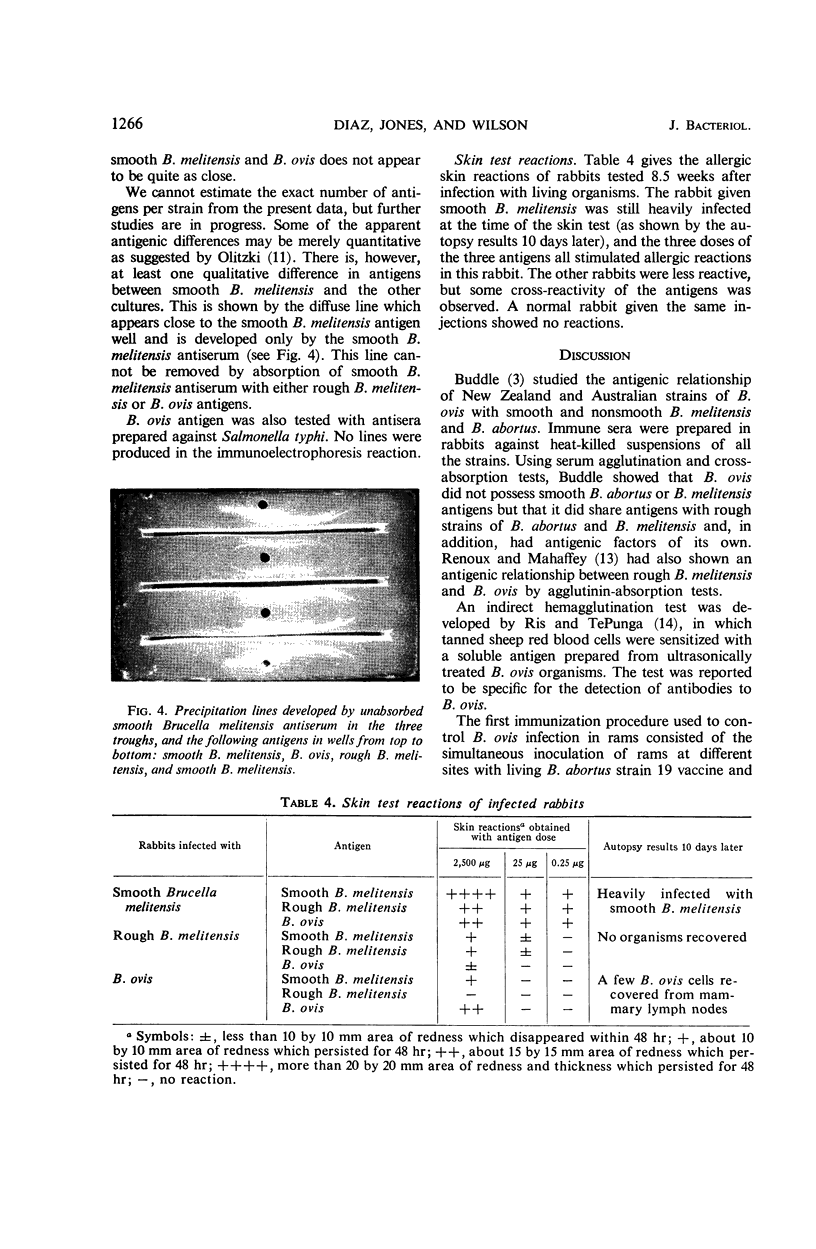
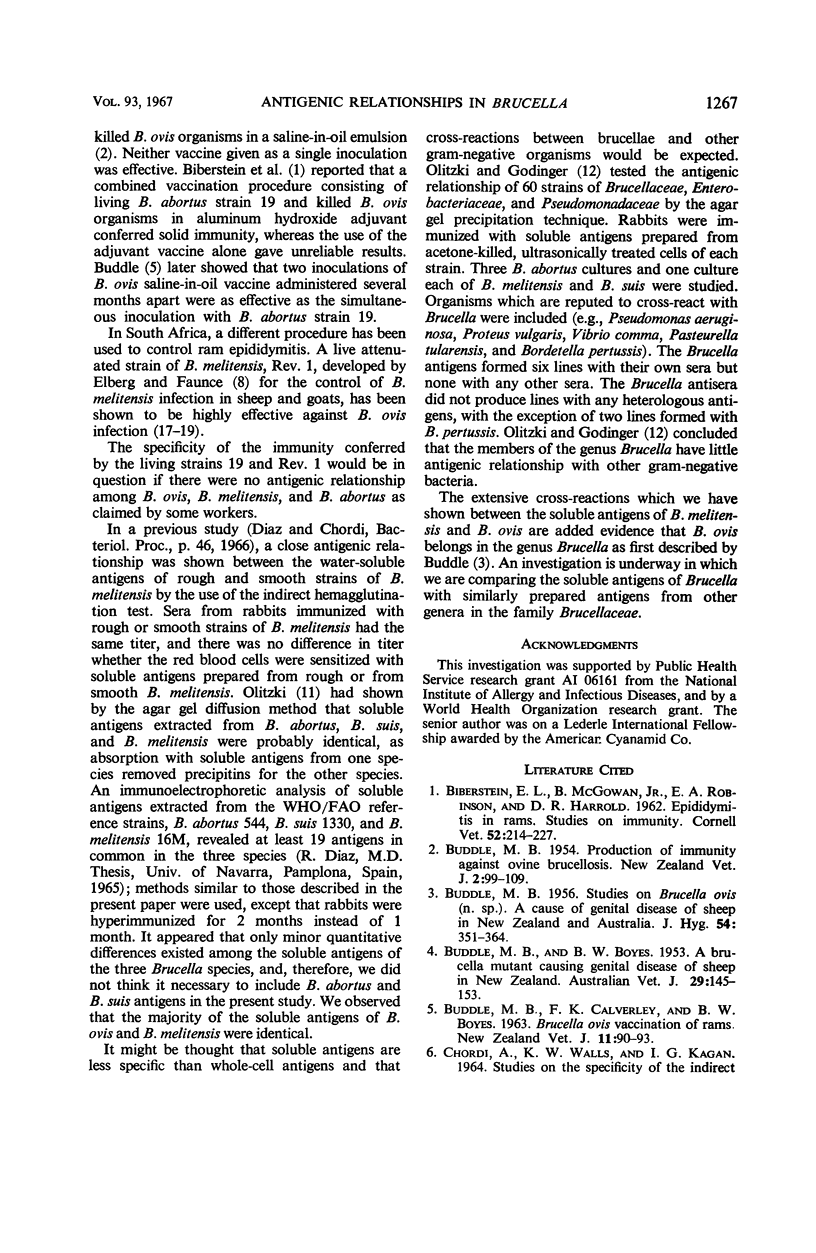
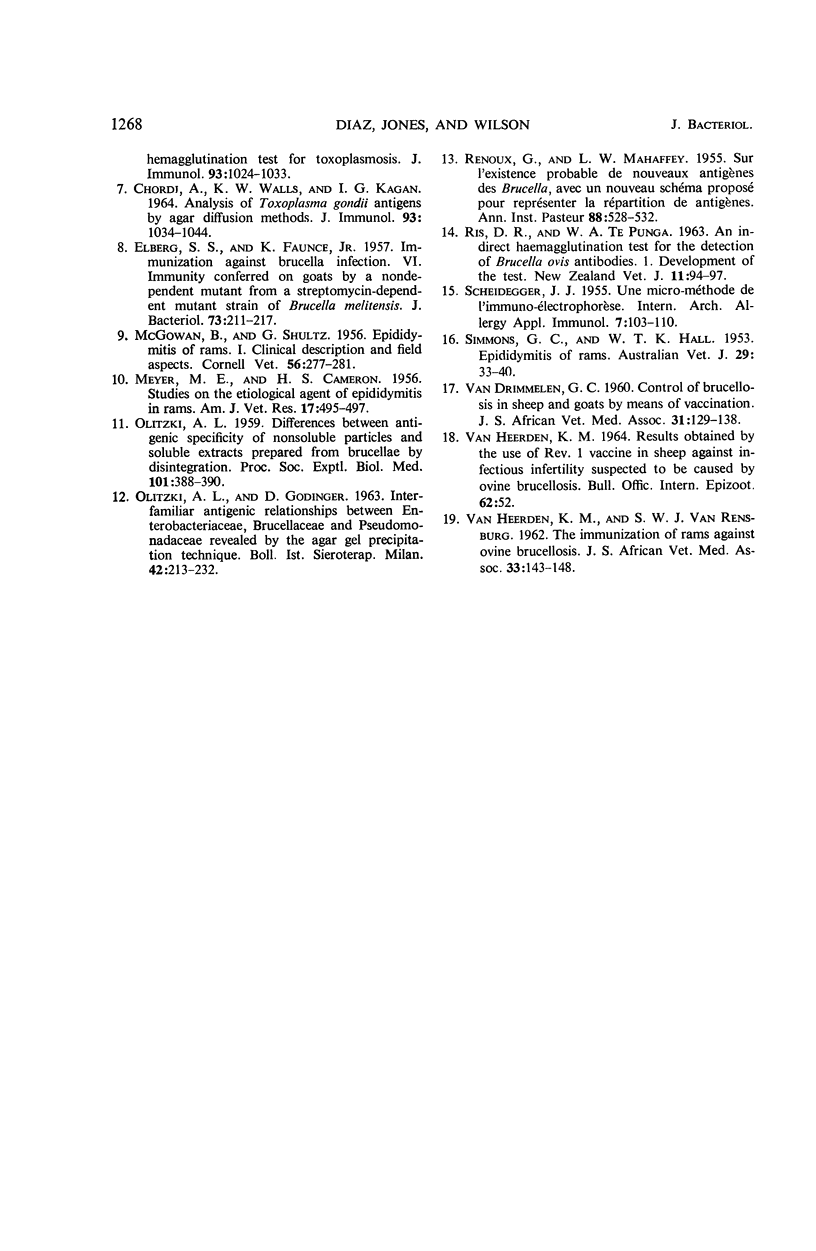
Images in this article
Selected References
These references are in PubMed. This may not be the complete list of references from this article.
- BIBERSTEIN E. L., McGOWAN B., Jr, ROBINSON E. A., HARROLD D. R. Epididymitis in rams. Studies on immunity. Cornell Vet. 1962 Apr;52:214–227. [PubMed] [Google Scholar]
- BUDDLE M. B. Studies on Brucella ovis (n.sp.), a cause of genital disease of sheep in New Zealand and Australia. J Hyg (Lond) 1956 Sep;54(3):351–364. doi: 10.1017/s0022172400044612. [DOI] [PMC free article] [PubMed] [Google Scholar]
- CHORDI A., WALLS K. W., KAGAN I. G. ANALYSIS OF TOXOPLASMA GONDII ANTIGENS BY AGAR DIFFUSION METHODS. J Immunol. 1964 Dec;93:1034–1044. [PubMed] [Google Scholar]
- ELBERG S. S., FAUNCE K., Jr Immunization against Brucella infection. VI. Immunity conferred on goats by a nondependent mutant from a streptomycin-dependent mutant strain of Brucella melitensis. J Bacteriol. 1957 Feb;73(2):211–217. doi: 10.1128/jb.73.2.211-217.1957. [DOI] [PMC free article] [PubMed] [Google Scholar]
- MEYER M. E., CAMERON H. S. Studies on the etiological agent of epididymitis in rams. Am J Vet Res. 1956 Jul;17(64):495–497. [PubMed] [Google Scholar]
- OLITZKI A. L., GODINGER D. INTER-FAMILIAR ANTIGENIC RELATIONSHIPS BETWEEN ENTEROBACTERIACEAE, BRUCELLACEAE AND PSEUDOMONADACEAE REVEALED BY THE AGAR GEL PRECIPITATION TECHNIQUE. Boll Ist Sieroter Milan. 1963 May-Jun;42:213–232. [PubMed] [Google Scholar]
- OLITZKI A. L. [Differences between antigenic specificity of nonsoluble particles and soluble extracts prepared from Brucellae by disintegration]. Proc Soc Exp Biol Med. 1959 Jun;101(2):388–390. doi: 10.3181/00379727-101-24952. [DOI] [PubMed] [Google Scholar]
- RENOUX G., MAHAFFEY L. W. Sur l'existence probable de nouveaux antigènes des Brucella, avec un nouveau schéma proposé pour représenter la répartition de antigènes. Ann Inst Pasteur (Paris) 1955 Apr;88(4):528–532. [PubMed] [Google Scholar]
- SCHEIDEGGER J. J. Une micro-méthode de l'immuno-electrophorèse. Int Arch Allergy Appl Immunol. 1955;7(2):103–110. [PubMed] [Google Scholar]





